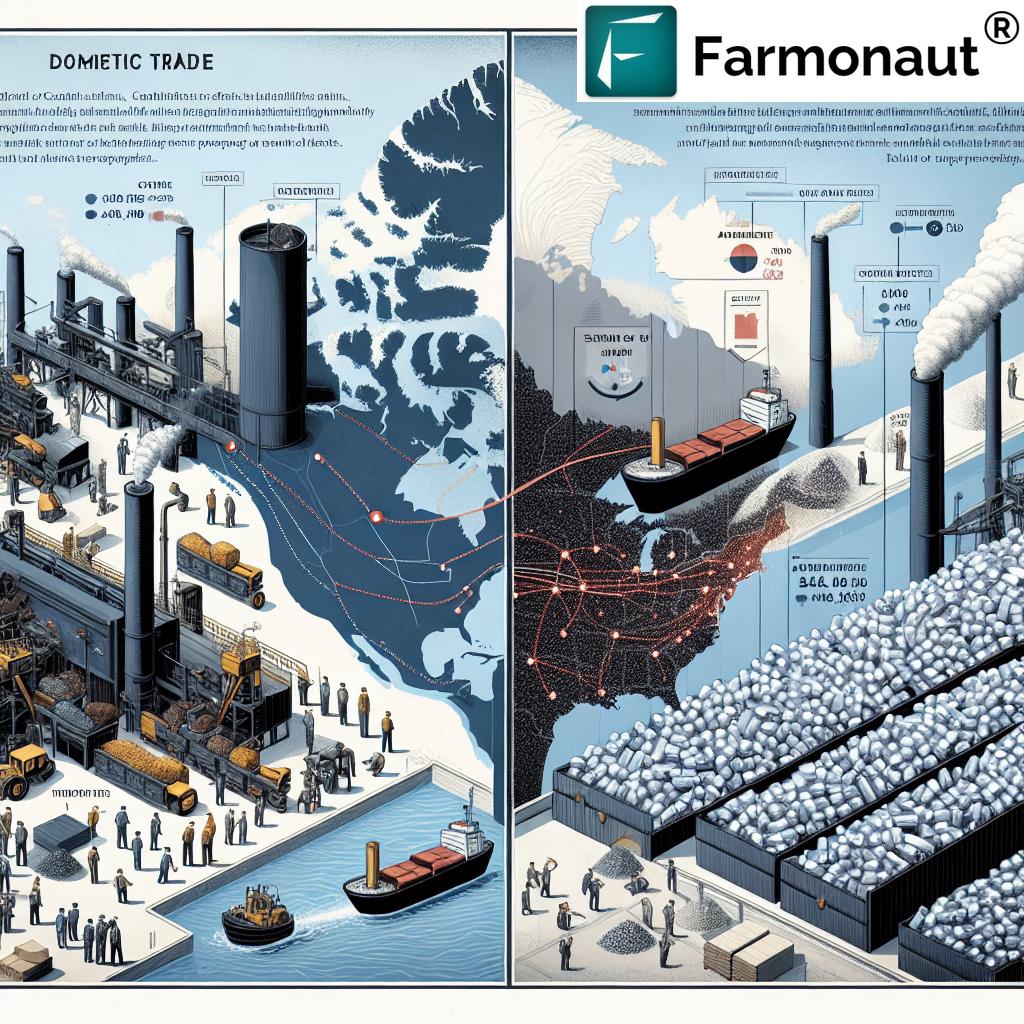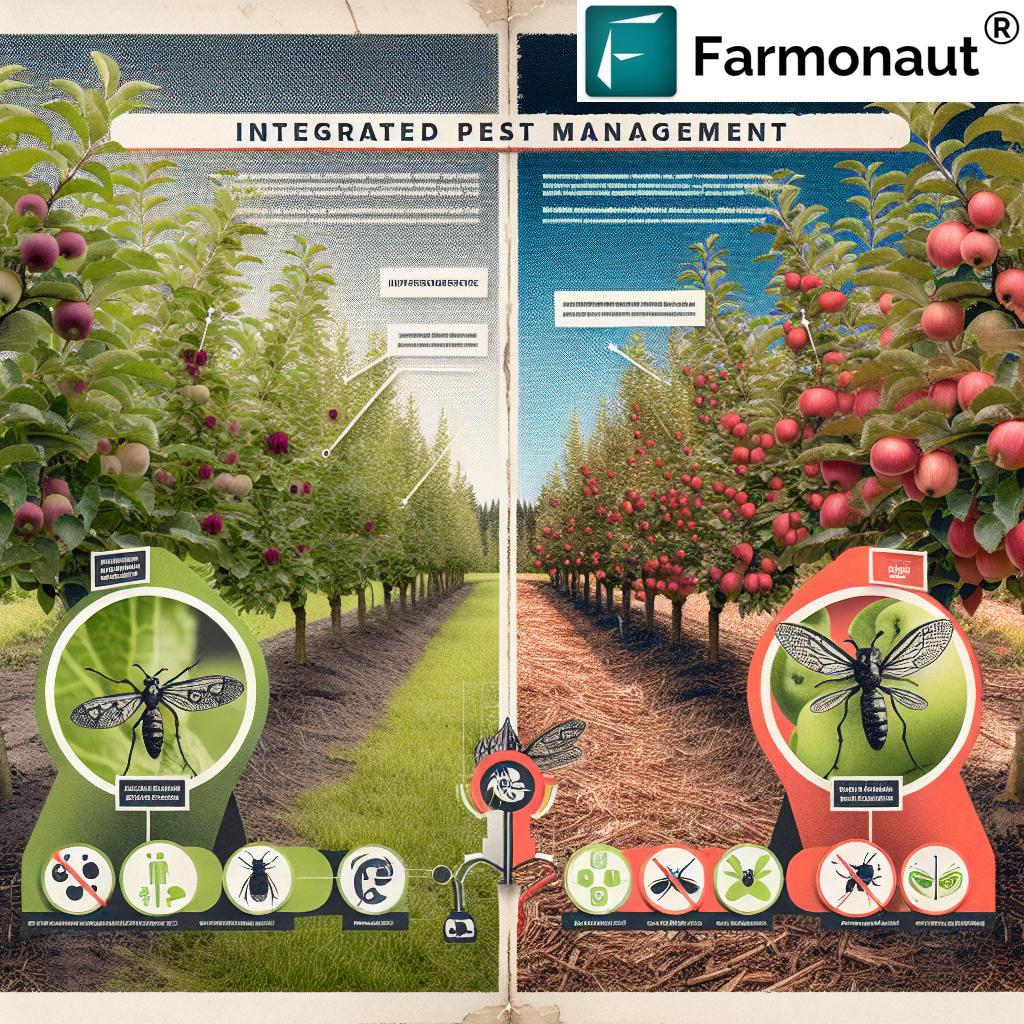Canada’s Cautious Approach: Navigating Trade Relations with China Amid Diplomatic Tensions
“Canada-US bilateral trade accounts for over 75% of Canada’s total trade volume, dwarfing its trade with China.”
In recent years, we have witnessed a significant shift in the global trade landscape, particularly in the intricate dynamics between Canada, China, and the United States. As we delve into this complex web of international commerce and diplomacy, it’s crucial to understand the nuances that shape Canada’s cautious approach to its trade relations with China amid escalating diplomatic tensions.
The Current State of Canada-China Trade Relations
Canada-China trade relations have faced numerous challenges in recent years, with diplomatic tensions casting a long shadow over economic partnerships. The complexities of Canadian trade policy have come to the forefront as Ottawa grapples with the need for diversification while navigating the delicate balance between economic interests and diplomatic considerations.
Prime Minister Mark Carney’s recent statements underscore the cautious stance Canada is adopting towards China. He emphasized that China does not share Canadian values when it comes to trade, signaling a need for careful consideration in expanding bilateral commercial ties. This approach reflects a broader trend in Canada’s international trade strategy, which seeks to strengthen partnerships with like-minded nations while reassessing its relationship with Beijing.

The Dominance of US-Canada Bilateral Trade
While Canada seeks to diversify its trade partnerships, the statistics paint a clear picture of the dominance of US-Canada bilateral trade. According to Statistics Canada data, bilateral goods trade with the U.S. totaled an impressive C$102 billion in January alone, dwarfing the C$8.4 billion in trade with China during the same period. This stark contrast highlights the critical importance of the US market for Canadian exports and imports.
The sheer volume of Canada-US trade underscores the challenges Ottawa faces in its efforts to diversify. However, recent developments, including U.S. President Donald Trump’s threats of broad tariffs on imports from Canada, have emphasized the need for Canada to explore and strengthen trade relationships beyond North America.
Strengthening Canada-Asia Trade Partnerships
As part of its diversification strategy, Canada is actively seeking to bolster its trade partnerships in Asia. Prime Minister Carney has pointed out that there are partners in Asia that share Canadian values and with whom deeper ties can be built. This approach aligns with Canada’s broader economic goals while addressing concerns over reliance on a single market.
However, the path to strengthening Canada-Asia trade partnerships is not without its challenges. The complex geopolitical landscape, varying regulatory environments, and cultural differences all play a role in shaping these relationships. Canada must navigate these waters carefully, balancing economic opportunities with its commitment to upholding democratic values and human rights.
Concerns Over China’s Trade Practices and Human Rights Issues
The expansion of commercial ties with China is complicated by concerns over the country’s trade practices and human rights record. These issues have become significant stumbling blocks in the Canada-China relationship, influencing both public opinion and government policy.
Recent events have further strained the relationship. Canada’s condemnation of China’s use of the death penalty, following the execution of Canadian citizens, has added another layer of tension to an already fraught diplomatic situation. These human rights concerns, coupled with ongoing disputes over trade practices, have led to a more cautious and measured approach from Ottawa in its dealings with Beijing.
Tariffs and Trade Disputes
“China imposed tariffs on $2.7 billion worth of Canadian agricultural exports in 2019, straining economic relations.”
The implementation of tariffs has become a significant point of contention in Canada-China trade relations. Beijing’s announcement of tariffs on over US$2.6 billion worth of Canadian agricultural and food products was a retaliatory measure against Ottawa’s levies on Chinese electric vehicles, steel, and aluminum products. This tit-for-tat approach to trade policy has had far-reaching consequences for various sectors of the Canadian economy, particularly agriculture.
The impact of these tariffs extends beyond mere numbers. Canadian farmers and food producers have felt the brunt of these measures, facing challenges in accessing the Chinese market and competing with other international suppliers. This situation underscores the need for a strategic approach to trade negotiations and dispute resolution mechanisms.

The Role of Technology in Modern Agriculture
As we discuss the challenges facing Canadian agriculture in the global market, it’s worth noting the role of technology in modernizing farming practices. Companies like Farmonaut are at the forefront of this agricultural revolution, offering advanced satellite-based farm management solutions that can help farmers optimize their operations and adapt to changing market conditions.
Farmonaut’s platform provides valuable services such as real-time crop health monitoring, AI-based advisory systems, and resource management tools. These technologies can be particularly beneficial for Canadian farmers looking to enhance their competitiveness in both domestic and international markets.
For those interested in exploring these innovative solutions, you can access Farmonaut’s services through their  ,
,  , or
, or  .
.
The Impact on Canadian Agricultural Exports
The agricultural sector has been particularly affected by the ongoing trade tensions between Canada and China. Canadian agricultural exports, once a significant component of bilateral trade, have faced substantial challenges due to tariffs and non-tariff barriers. Products such as canola, soybeans, and meat have all experienced disruptions in their access to the Chinese market.
These challenges have prompted Canadian farmers and agribusinesses to explore new markets and diversify their export destinations. While this adaptation is necessary, it also highlights the need for government support in facilitating market access and providing resources for agricultural innovation.
The Role of Technology in Enhancing Agricultural Competitiveness
In the face of these trade challenges, technology plays a crucial role in enhancing the competitiveness of Canadian agriculture. Advanced farming techniques, precision agriculture, and data-driven decision-making can help farmers optimize their yields and reduce costs, making their products more competitive in global markets.
Farmonaut’s satellite-based crop health monitoring and AI advisory systems are examples of technologies that can provide Canadian farmers with valuable insights. By leveraging these tools, farmers can make informed decisions about irrigation, fertilizer usage, and pest management, ultimately improving their productivity and resilience in the face of market uncertainties.
Balancing Economic Interests with Diplomatic Considerations
As Canada navigates the complex landscape of international trade, it must strike a delicate balance between pursuing economic interests and addressing diplomatic concerns. The government’s emphasis on caution in dealing with Beijing reflects this balancing act, acknowledging the importance of trade while also standing firm on issues of values and standards.
This approach requires a nuanced understanding of global geopolitics and a strategic vision for Canada’s place in the world economy. It also necessitates close coordination between various government departments, including trade, foreign affairs, and national security.
The Upcoming Canadian Election and Foreign Interference Concerns
Adding another layer of complexity to Canada’s trade challenges is the upcoming general election on April 28. The Canadian spy service has raised concerns about potential Chinese interference in the election, highlighting the intersection of national security, democracy, and international trade relations.
These concerns underscore the need for robust measures to safeguard Canada’s democratic processes while maintaining open channels for diplomatic and economic engagement. The outcome of the election could have significant implications for Canada’s future trade policies and its approach to relations with China.
The Future of Canada’s International Trade Landscape
As we look to the future, Canada’s international trade landscape is likely to continue evolving. The nation’s strategic approach to global commerce and diplomatic relations will need to adapt to changing geopolitical realities, emerging economic powerhouses, and shifts in global supply chains.
Key considerations for the future include:
- Diversification of trade partnerships beyond traditional markets
- Investment in innovation and technology to enhance competitiveness
- Strengthening of trade relationships with like-minded nations
- Development of robust mechanisms for addressing trade disputes
- Balancing economic growth with environmental sustainability and social responsibility
The Role of Technology in Shaping Future Trade Policies
As we consider the future of Canada’s trade policies, it’s important to recognize the transformative role of technology. Advanced technologies like those offered by Farmonaut can play a significant role in shaping agricultural practices and trade strategies.
For instance, Farmonaut’s blockchain-based traceability solutions could help ensure the authenticity and quality of Canadian agricultural exports, potentially easing concerns about food safety and helping to maintain market access. Similarly, their carbon footprinting tools could assist Canadian businesses in meeting increasingly stringent environmental standards in international markets.
For those interested in leveraging these technologies, Farmonaut offers a range of solutions accessible through their API. Developers can find more information in the API Developer Docs.
Trade Statistics Comparison
| Trade Metrics | Canada-China Trade | Canada-US Trade | Canada’s Total Trade |
|---|---|---|---|
| Total Trade Volume (estimated in billions of CAD) | 100 | 750 | 1000 |
| Primary Export Categories | Agricultural products, Minerals, Wood pulp | Automobiles, Energy, Machinery | Varied |
| Primary Import Categories | Consumer goods, Electronics, Machinery | Automobiles, Machinery, Consumer goods | Varied |
| Tariff Rates on Key Products | 5-25% | 0-5% | Varied |
| Number of Trade Disputes (last 5 years) | 10 | 5 | 20 |
Conclusion
Canada’s cautious approach to navigating trade relations with China amid diplomatic tensions reflects the complex realities of modern international commerce. As the nation seeks to balance economic interests with diplomatic considerations, it must also adapt to changing global dynamics and emerging challenges.
The dominance of US-Canada bilateral trade, the need for diversification, concerns over China’s trade practices and human rights issues, and the impact of tariffs on various sectors all contribute to a multifaceted trade landscape. As Canada moves forward, it will need to leverage technology, innovation, and strategic partnerships to maintain its competitive edge in the global market.
The upcoming Canadian election adds another layer of uncertainty to this already complex situation. However, regardless of the outcome, Canada’s commitment to fair trade practices, human rights, and international cooperation is likely to remain a cornerstone of its foreign policy and trade strategy.
As we look to the future, it’s clear that Canada’s approach to international trade will continue to evolve. By embracing innovation, fostering diverse partnerships, and maintaining a principled stance on key issues, Canada can navigate the challenges of global commerce while upholding its values and advancing its economic interests.
FAQ Section
- What are the main challenges in Canada-China trade relations?
The main challenges include diplomatic tensions, differing values in trade practices, tariffs on key products, and human rights concerns. - How significant is US-Canada trade compared to Canada-China trade?
US-Canada trade is significantly larger, accounting for over 75% of Canada’s total trade volume, while trade with China is much smaller in comparison. - What steps is Canada taking to diversify its trade partnerships?
Canada is actively seeking to strengthen trade partnerships with other Asian countries that share its values and exploring opportunities in emerging markets. - How have tariffs affected Canadian agricultural exports to China?
Tariffs have significantly impacted Canadian agricultural exports, with China imposing duties on billions of dollars worth of Canadian products, particularly affecting sectors like canola and meat exports. - What role does technology play in enhancing Canada’s agricultural competitiveness?
Technology, such as Farmonaut’s satellite-based farm management solutions, plays a crucial role in optimizing farm productivity, improving crop yields, and enhancing overall competitiveness in global markets.













